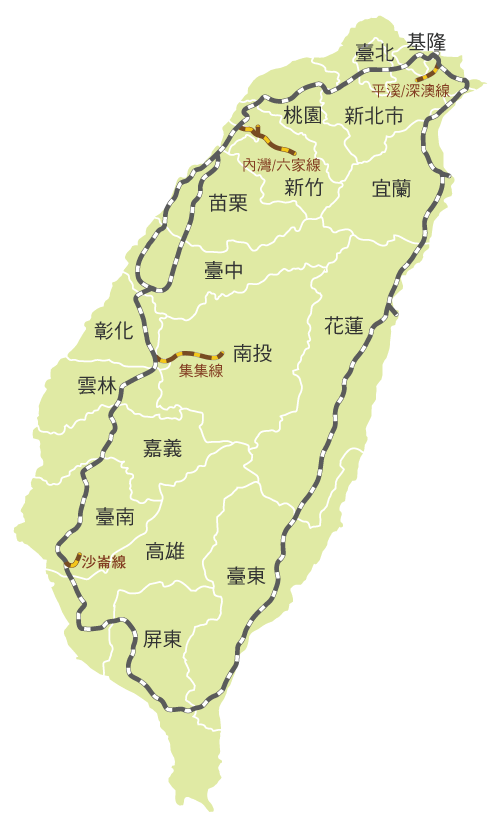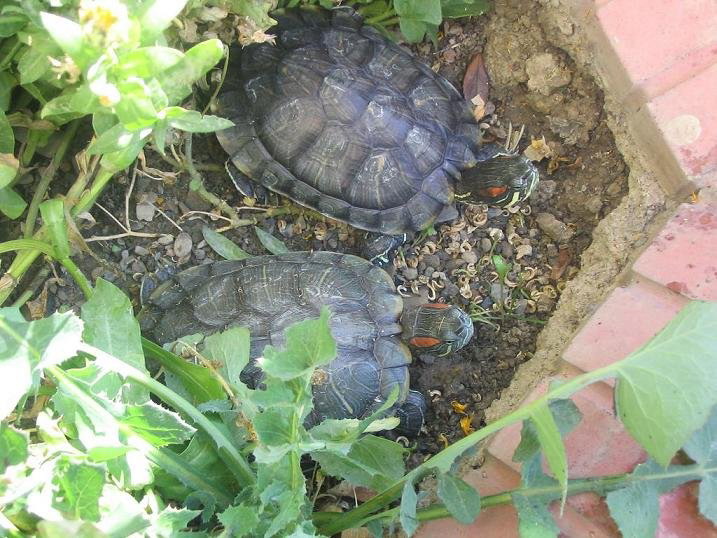|
Hsinchu Zoo
The Hsinchu Zoo () is a zoo in East District, Hsinchu City, Taiwan. History Established in 1936, the zoo is the oldest zoo in Taiwan. The zoo went under reconstruction and was reopened in December 2019. Architecture * Children's Zoo ** Chinchilla **Asian water buffalo **Domestic rabbit **Pony * Primate's Families ** Formosan rock monkey ** Brown lemur ** Grey gibbon ** Crab eating macaque * Bird's Paradise **Sulphur-crested cockatoo ** Green peafowl **Common peafowl **Mandarin duck * Tropical Rain Forest **Malayan sun bear **Orangutan **Bengal tiger ** Alligator snapping turtle * Reptile Kingdom **Yellow margined box turtle **African spurred tortoise ** Green iguana ** Red eared slider * Deer's Wonderland **Formosan sika deer **Formosan barking deer Exhibitions The zoo currently exhibits more than 300 animals from 100 different species, which includes 70 animals from 23 protected species. Transportation The zoo is accessible within walking distance east of Hsinchu Station of ... [...More Info...] [...Related Items...] OR: [Wikipedia] [Google] [Baidu] |
East District, Hsinchu City
East District () is a district in east Hsinchu City, Taiwan. It is the second largest of the three districts in Hsinchu City. The East District is home to the Hsinchu Science and Industrial Park. Geography * Area: * Population: 208,122 (January 2016) Administrative divisions The district consists of Nanmen, Fude, Nanshi, Guandi, Tungmen, Rongguang, Chenggong, Xiazhu, Zhulian, Siqian, Yuxian, Zhongzheng, Gongyuan, Dingzhu, Nanda, Zhenxing, Qinren, Wenhua, Fuzhong, Sanmin, Tungyuan, Tungshi, Guangfu, Fenggong, Wugong, Lushui, Tungshan, Guangzhen, Xinxing, Zhaiqiao, Gaofeng, Xiangong, Guangming, Ligong, Jungong, Jiangong, Qianxi, Shuiyuan, Qianjia, Puding, Longshan, Xinzhuang, Xianshui, Jinshan, Guantung, Keyuan, Jianhua, Xinguang, Fuxing, Jinhua, Hubin, Minghu and Guanxin Village.https://www.cec.gov.tw/pc/en/TV/nm10018000100000000.html Government institutions * National Synchrotron Radiation Research Center * National Space Organization * National Applied Research Laboratories ... [...More Info...] [...Related Items...] OR: [Wikipedia] [Google] [Baidu] |
Bengal Tiger
The Bengal tiger is a population of the ''Panthera tigris tigris'' subspecies. It ranks among the biggest wild cats alive today. It is considered to belong to the world's charismatic megafauna. The tiger is estimated to have been present in the Indian subcontinent since the Late Pleistocene, for about 12,000 to 16,500 years. Today, it is threatened by poaching, Habitat loss, loss and Habitat fragmentation, fragmentation of habitat, and was estimated at comprising fewer than 2,500 wild individuals by 2011. None of the ''Tiger Conservation Landscapes'' within its range is considered large enough to support an effective population of more than 250 adult individuals. The Bengal tiger's historical range covered the Indus River valley until the early 19th century, almost all of India, Pakistan, southern Nepal, Bangladesh, Bhutan and southwestern China. Today, it inhabits India, Bangladesh, Nepal, Bhutan and southwestern China. India's tiger population was estimated at 2,603–3,346 ... [...More Info...] [...Related Items...] OR: [Wikipedia] [Google] [Baidu] |
Tourist Attractions In Hsinchu
Tourism is travel for pleasure or business; also the theory and practice of touring, the business of attracting, accommodating, and entertaining tourists, and the business of operating tours. The World Tourism Organization defines tourism more generally, in terms which go "beyond the common perception of tourism as being limited to holiday activity only", as people "travelling to and staying in places outside their usual environment for not more than one consecutive year for leisure and not less than 24 hours, business and other purposes". Tourism can be domestic (within the traveller's own country) or international, and international tourism has both incoming and outgoing implications on a country's balance of payments. Tourism numbers declined as a result of a strong economic slowdown (the late-2000s recession) between the second half of 2008 and the end of 2009, and in consequence of the outbreak of the 2009 H1N1 influenza virus, but slowly recovered until the COVID-19 ... [...More Info...] [...Related Items...] OR: [Wikipedia] [Google] [Baidu] |
Buildings And Structures In Hsinchu
A building, or edifice, is an enclosed structure with a roof and walls standing more or less permanently in one place, such as a house or factory (although there's also portable buildings). Buildings come in a variety of sizes, shapes, and functions, and have been adapted throughout history for a wide number of factors, from building materials available, to weather conditions, land prices, ground conditions, specific uses, prestige, and aesthetic reasons. To better understand the term ''building'' compare the list of nonbuilding structures. Buildings serve several societal needs – primarily as shelter from weather, security, living space, privacy, to store belongings, and to comfortably live and work. A building as a shelter represents a physical division of the human habitat (a place of comfort and safety) and the ''outside'' (a place that at times may be harsh and harmful). Ever since the first cave paintings, buildings have also become objects or canvasses of much artistic ... [...More Info...] [...Related Items...] OR: [Wikipedia] [Google] [Baidu] |
1936 Establishments In Taiwan
Events January–February * January 20 – George V of the United Kingdom and the British Dominions and Emperor of India, dies at his Sandringham Estate. The Prince of Wales succeeds to the throne of the United Kingdom as King Edward VIII. * January 28 – Britain's King George V state funeral takes place in London and Windsor. He is buried at St George's Chapel, Windsor Castle * February 4 – Radium E (bismuth-210) becomes the first radioactive element to be made synthetically. * February 6 – The IV Olympic Winter Games open in Garmisch-Partenkirchen, Germany. * February 10– 19 – Second Italo-Ethiopian War: Battle of Amba Aradam – Italian forces gain a decisive tactical victory, effectively neutralizing the army of the Ethiopian Empire. * February 16 – 1936 Spanish general election: The left-wing Popular Front coalition takes a majority. * February 26 – February 26 Incident (二・二六事件, ''Niniroku Jiken''): Th ... [...More Info...] [...Related Items...] OR: [Wikipedia] [Google] [Baidu] |
List Of Tourist Attractions In Taiwan
Popular tourist attractions in Taiwan include the following: Attractions Historical buildings * Beihai Tunnel, Beigan () * Beihai Tunnel, Nangan () * Daxi Wude Hall () * Eternal Golden Castle * First Guesthouse * Fongyi Tutorial Academy * Former British Consulate at Takao * Former Japanese Navy Fongshan Communication Center * Former Tainan Weather Observatory * Fort Provintia * Fort Santo Domingo * Fort Zeelandia * Fuxing Barn * Great South Gate * Gulongtou Zhenwei Residence * Hobe Fort * Jhen Wen Academy * Kaohsiung Grand Hotel * Keelung Fort Commander's Official Residence * Lee Teng-fan's Ancient Residence * Lin Family Mansion and Garden * Meinong East Gate Tower * Moving Castle * Niumatou Site * North Gate of Xiong Town * Presidential Office Building * Qihou Fort * Qing Dynasty Taiwan Provincial Administration Hall * Shihlin Paper Mill * Taipei Guest House * Tianma Tea House * Walls of Taipei * Wist ... [...More Info...] [...Related Items...] OR: [Wikipedia] [Google] [Baidu] |
Taiwan Railways Administration
Taiwan Railways Administration (TRA) is a railway operator in Taiwan. It is an agency of the Ministry of Transportation and Communications, responsible for managing, maintaining, and running conventional passenger and freight railway services on 1097 km of track in Taiwan. Since Taiwan is heavily urbanised with a high population density, railways have played an important part in domestic transportation since the late 19th century. Passenger traffic in 2018 was 231,267,955. The agency's headquarters are in Zhongzheng District, Taipei. Overview Railway services between Keelung and Hsinchu began in 1891 under China's Qing dynasty. Because the railway was completely rebuilt and substantially expanded under the operated by Formosa's Japanese colonial government (1895–1945), the network's Japanese influence and heritage persists. Similarities between the TRA and the Japan Railways (JR) companies can be noted in signal aspects, signage, track layout, fare controls, sta ... [...More Info...] [...Related Items...] OR: [Wikipedia] [Google] [Baidu] |
Hsinchu Railway Station
Hsinchu () is a railway station in East District, Hsinchu City, Taiwan served by Taiwan Railways Administration. Hsinchu Station is a major station on the West Coast line and the western terminus of the Neiwan line. Structure There are two island platforms and one side platform, as well as the historic fourth-generation European-style station building which opened in 1913, during Japanese rule. Service Except ''Tzu-Chiang Limited Express'' southbound 133, 143, northbound 138, and some ''Taroko Expresses'', all other trains stop at Hsinchu Station. It is also the main destination of commuter local trains in Northern Taiwan. Neiwan line trains travel from this station to Neiwan Station. Connection to the THSR Hsinchu Station is available through Liujia line (which branches off from the Neiwan line's Zhuzhong Station). Around the station * Black Bat Squadron Memorial Hall * Hsinchu City Art Site of Railway Warehouse * Hsinchu Performing Arts Center * Immaculate Heart of M ... [...More Info...] [...Related Items...] OR: [Wikipedia] [Google] [Baidu] |
Muntjac
Muntjacs ( ), also known as the barking deer or rib-faced deer, (URL is Google Books) are small deer of the genus ''Muntiacus'' native to South Asia and Southeast Asia. Muntjacs are thought to have begun appearing 15–35 million years ago, with remains found in Miocene deposits in France, Germany and Poland. Most species are listed as Least Concern or Data Deficient by the IUCN, although others such as the black muntjac, Bornean yellow muntjac, and giant muntjac are Vulnerable, Near Threatened, and Critically Endangered, respectively. Name The present name is a borrowing of the Latinized form of the Dutch , which was borrowed from the Sundanese ''mēncēk''. The Latin form first appeared as in Zimmerman in 1780. An erroneous alternative name of 'Mastreani deer' has its origins in a mischievous Wikipedia entry from 2011 and is incorrect. Description The present-day species are native to Asia and can be found in India, Sri Lanka, Myanmar, Vietnam, the Indonesian ... [...More Info...] [...Related Items...] OR: [Wikipedia] [Google] [Baidu] |
Formosan Sika Deer
The Formosan sika deer () (''Cervus nippon taiouanus'') is a subspecies of sika deer endemic to the island of Taiwan. Formosan sika, like most of the terrestrial fauna and flora of Taiwan, arrived on the island during Pleistocene glacial periods when lower sea levels connected Taiwan to the Asian mainland. Appearance and behavior Sika stand 90–120 cm at the shoulder, 155 cm in length, 43 - 68 kg in weight. Males are larger and bear deciduous antlers. The summer coat is light brownish, with obvious white spots, while in winter their coat is darker and the spots fade. Range and habitat The natural distribution of sika on Taiwan was in the woodlands from sea level up to about 300 meters elevation. Sika, like many deer, prefer areas of mixed forest, scrub, and open land. Under natural conditions the low-lying alluvial plain that stretches from present-day Taipei along the west coast almost to the southern tip of the island were prime deer habitat and natural populations ... [...More Info...] [...Related Items...] OR: [Wikipedia] [Google] [Baidu] |
Red-eared Slider
The red-eared slider or red-eared terrapin (''Trachemys scripta elegans'') is a subspecies of the pond slider (''Trachemys scripta''), a semiaquatic turtle belonging to the family Emydidae. It is the most popular pet turtle in the United States, is also popular as a pet across the rest of the world, and is the most invasive turtle. It is the most commonly traded turtle in the world. The red-eared slider is native from the Midwestern United States to northern Mexico, but has become established in other places because of pet releases, and has become invasive in many areas where it outcompetes native species. The red-eared slider is included in the list of the world's 100 most invasive species. Etymology The red-eared slider gets its name from the small, red stripe around its ears, or where its ears would be, and from its ability to slide quickly off rocks and logs into the water. This species was previously known as Troost's turtle in honor of an American herpetologist ... [...More Info...] [...Related Items...] OR: [Wikipedia] [Google] [Baidu] |







